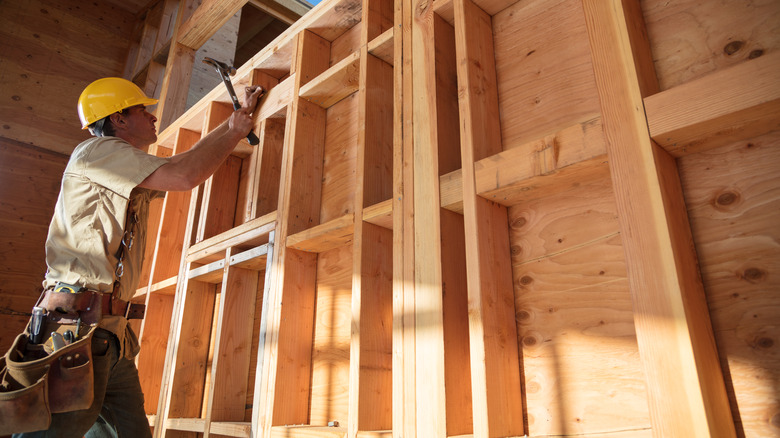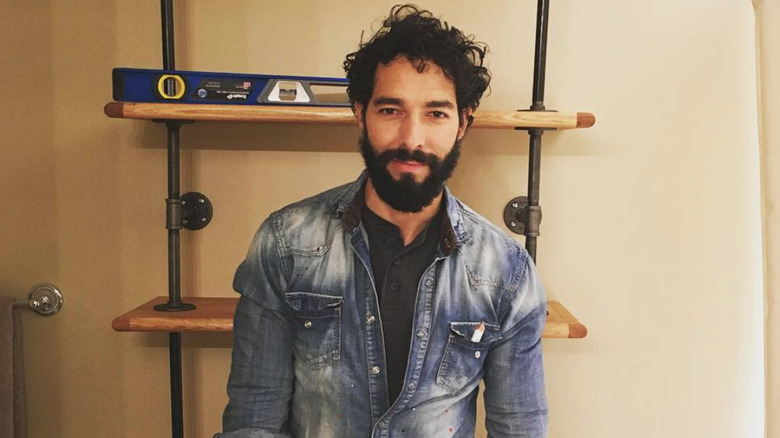How HGTV's Shane Duffy Uses 'Blocking' For Sturdy Walls
HGTV's "Build It Forward" star Shane Duffy knows the ins and outs of home design, and when it comes to renovations, he says that a solid foundation is key. "If you're doing a new build, knocking down walls, or pulling off drywall and you have access to framing, [put] in blocking," Duffy tells Realtor.com.
Blocking refers to the installation of solid wood within the wall cavity to add structural support, create attachment points, or provide stability for various elements. Even though it makes a huge difference in the structure of a home, it is often forgotten in those early building stages. "Adding that in when you're framing the house will save you so much time and hassle in the future. That's something that people don't think of," Duffy says.
When there's blocking in the walls, it makes them sturdier it keeps the structures from moving, preventing cracks and other types of damage. Blocking also provides additional support for objects that may be mounted on walls like towel bars, handrails, cabinets, shelves, or TVs and serves as a solid surface for attaching plumbing pipes, electrical conduits, or other utilities. Here's what you need to know about adding it to your home.
What exactly is blocking and what is it used for?
Blocking is a horizontal piece of material that's added in between wall studs, which are the vertical parts of a wall's frame. It can be made of various materials, including wood, metal, or engineered products designed for specific applications. Whichever material you choose, Shane Duffy advises avoiding the cheap route. "You don't have to get the best of the best, but at the end of the day, if it's your home and you're living in it, I always say renovate your home to be the best home it can be for you."
Blocks are also known as fire stops because they can stop the spread of fire in a house. They are used to close off separate framed areas and are required in walls of over 10 feet in height. Blocks can also fill spaces that studs don't fill properly. Adding blocking to walls during a renovation can be beneficial to keep them sturdy, especially if you anticipate future installations and expect to need additional support. Knowing the specifics of what you plan to install or fix to the wall and where also helps a lot when planning out the blocking. While it is possible to install blocking after the walls go up, it will save a lot of time and financial resources if it's done at the same time as the wall framing.
How to install blocking
Blocking basically requires taking a block of wood and fastening it between studs. When using wood for blocks, boards of 2 x 4, 2 x 6, and 2 x 8 are typical. They can be fastened with a hammer and nails, a nail gun, or 3-inch screws. You can also use scrap wood, which is a good, cost-effective tip if you're DIY.
Sometimes, you might find that there is a pipe or something in the way and need to block around it. MyFixitUpLife suggests taking two 1.5-inch by 1.5-inch ripper blocks and fastening them vertically to the studs on both sides a half-inch back. Then, fasten a thinner block vertically over them with the space left like a normal block, and you won't have to interfere with the plumbing pipes. Blocking is typically needed in places like the kitchen and the bathroom for mounted microwaves, wall cabinets, tub surrounds, grab bars, and toilets, so it's helpful to know how to add this support when framing.

